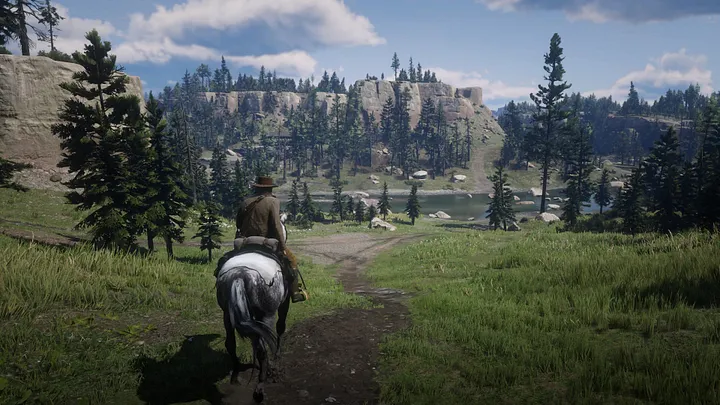
Pathfinding is a crucial aspect of game mechanics that significantly impacts the gameplay experience. Whether you are developing a complex RPG or a simple mobile game, understanding and implementing efficient pathfinding algorithms can elevate your game to the next level. In this article, we will delve deeper, exploring various algorithms, their applications, and best practices for integrating them into your game development process.
What is pathfinding?
Pathfinding refers to the process of determining the shortest possible route between two points. In gaming, this usually involves navigating a character or unit through a virtual environment, avoiding obstacles and reaching a destination efficiently.

Main path-finding algorithms
Pathfinding algorithms can be classified into several types, each with its own strengths and weaknesses. Here are the most common ones:
1. Dijkstra’s algorithm
Dijkstra’s algorithm is a graph-based method that guarantees the shortest path in a weighted graph. It systematically explores all possible paths from the starting point to the destination, ensuring an optimal solution.
Benefit:

- Guarantees the shortest path
- Works well with varying edge weights
Loss:
- computationally intensive
- Not suitable for real-time applications
2. A* (A-star) algorithm
The A* algorithm is a popular choice for pathfinding in games due to its efficiency and accuracy. It combines the powers of Dijkstra’s algorithm with heuristics to prioritize paths that are likely to lead to the destination quickly.

Benefit:
- Efficient and fast
- Heuristic approach reduces computation time
Loss:

- Good heuristic function is needed for optimal performance
3. Breadth-First Search (BFS)
BFS is a simple algorithm that explores all possible paths level by level. It is useful for unweighted grids where the goal is to find the shortest path in terms of the number of steps.
Benefit:

- Simple to implement
- Guarantees shortest paths in an unweighted grid
Loss:
- Can be slow for larger grids
- High memory usage
4. Depth-First Search (DFS)
DFS finds paths by going as deep as possible before backtracking. It is not commonly used to find paths in games due to its tendency to get stuck in deep paths, but it can be useful in specific scenarios.
Benefit:
- Simple implementation
- Useful for solving mazes
Loss:
- does not guarantee the shortest path
- can get stuck in loops
5. Greedy Best-First Search
This algorithm uses heuristics to prioritize paths that seem to lead to the destination. It is faster than A* but does not guarantee the shortest path.
Benefit:
- Fast
- Simple estimation-based approach
Loss:
- does not guarantee the shortest path
Choosing the Right Pathfinding Algorithm
Choosing the appropriate pathfinding algorithm depends on the needs of your game. Here’s a quick guide to help you decide:
- For grid-based games with equal movement costs: BFS or A*
- For weighted graphs with varying movement costs: Dijkstra or A*
- Solving a Maze: DFS
- For quick, approximate solutions: greedy best-first search
Implementing Pathfinding in Your Game
Step 1: Define the environment
First, map out your game environment. This can be a grid, a graph, or some other representation of your game world. Make sure you have clear definitions of obstacles, start points, and end points.
Step 2: Choose and implement the algorithm
Depending on the needs of your game, select the appropriate algorithm. Write the implementation code, making sure it integrates seamlessly with your game’s architecture. Here are some ideas:
- Efficiency: Optimize algorithms to run smoothly even on lower-end hardware.
- Accuracy: Make sure the algorithm finds the correct path under different circumstances.
Step 3: Test Thoroughly
Test your pathfinding implementation thoroughly. Create different scenarios, including edge cases, to make sure the algorithm works reliably.
Step 4: Optimize
Even after implementation and testing, optimization is important. Consider techniques such as hierarchical pathfinding, where large environments are divided into smaller sections for more efficient pathfinding.
Advanced path-finding techniques
Hierarchical path finding
Hierarchical pathfinding involves dividing the environment into small, manageable sections. Each section can be navigated individually, and higher-level paths connect these sections.
benefits:
- Reduces computational load
- Efficient for large environments
Flow field pathfinding
Flow field pathfinding involves creating a flow field that guides entities toward their goal. This is particularly useful for managing large numbers of entities, such as in real-time strategy games.
benefits:
- Efficient for large-scale path-finding
- scalable
Navigation mesh
The navigation mesh (NavMesh) divides the game world into convex polygons, simplifying the pathfinding process. Entities navigate from one polygon to another by following the edges of these polygons.
benefits:
- Handles complex environments well
- Reduces path-finding complexity
Best practices for pathfinding in games
- Optimize early: Implement optimizations early in the development process to avoid performance bottlenecks.
- Use appropriate data structures: Select data structures that enhance the performance of your chosen algorithm.
- Consider dynamic environments: Make sure your pathfinding algorithm can handle changes to the environment, such as moving obstacles.
- Balance accuracy and performance: Aim to strike a balance between accurate pathfinding and overall game performance.
Common challenges and solutions
Challenge 1: Dynamic Obstacles
The solution: Use dynamic pathfinding algorithms that can adjust paths in real time as obstacles move.
Challenge 2: Large Environments
Solution: Implement hierarchical pathfinding or NavMeshes to efficiently manage large spaces.
Challenge 3: Multiple Units
Solution: Use flow field pathfinding or multi-agent pathfinding techniques to handle multiple entities efficiently.
conclusion
Pathfinding is a critical component of game mechanics that can significantly impact the player experience. By understanding and implementing the right algorithms, optimizing performance, and addressing common challenges, you can ensure that your game provides intuitive and engaging navigation for all characters and entities.




